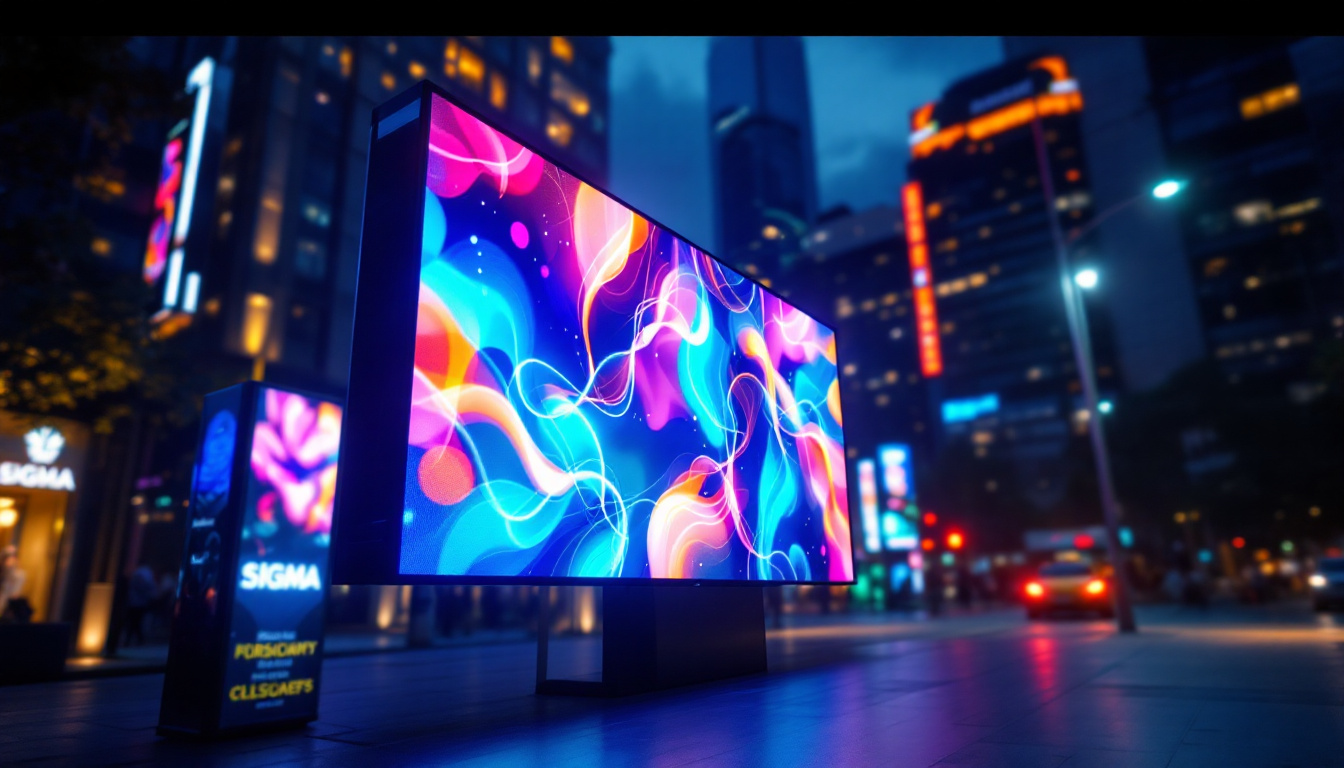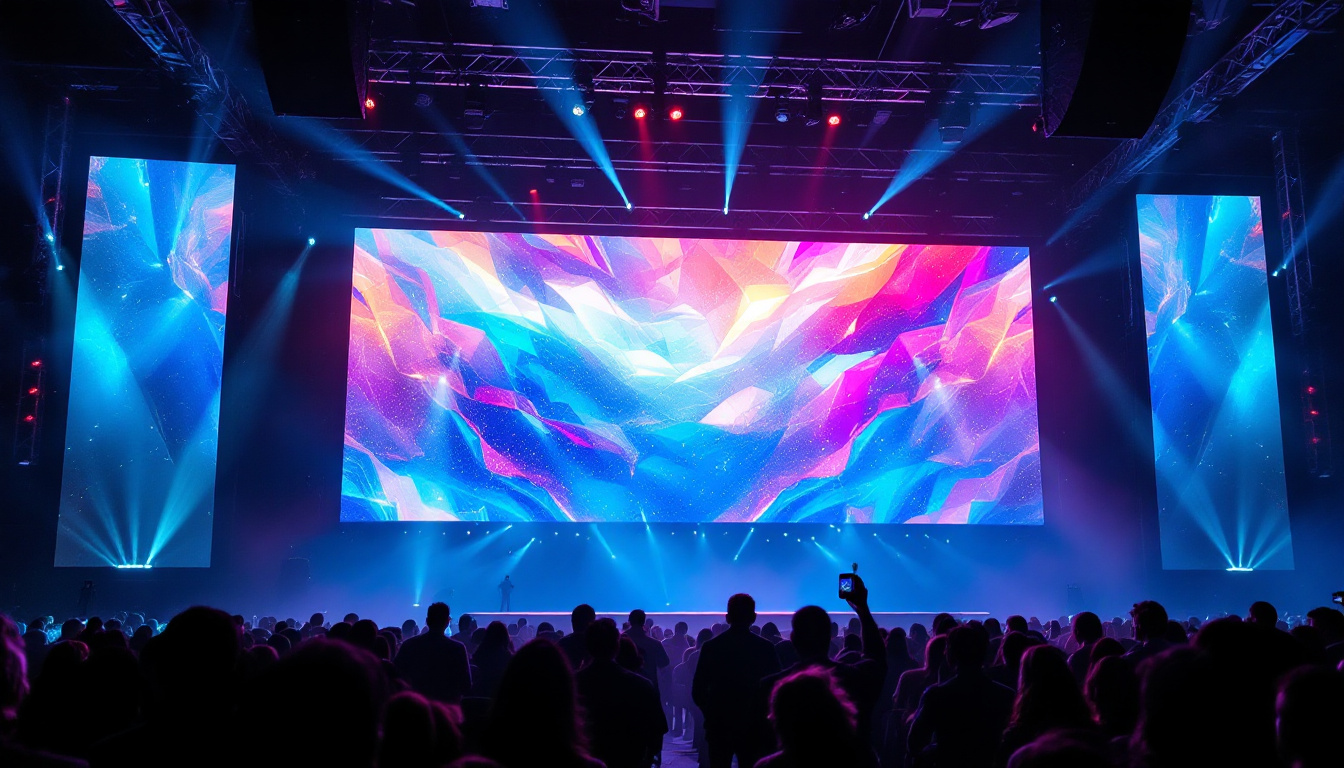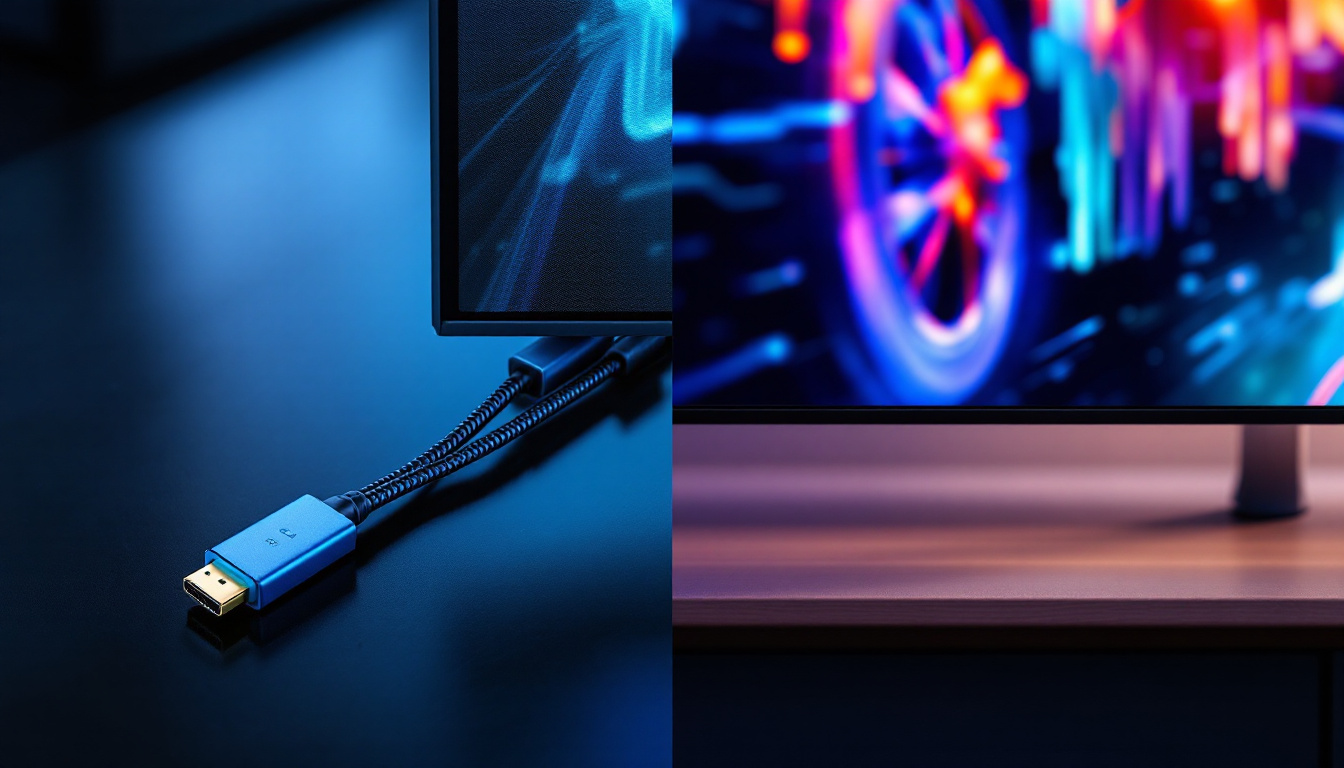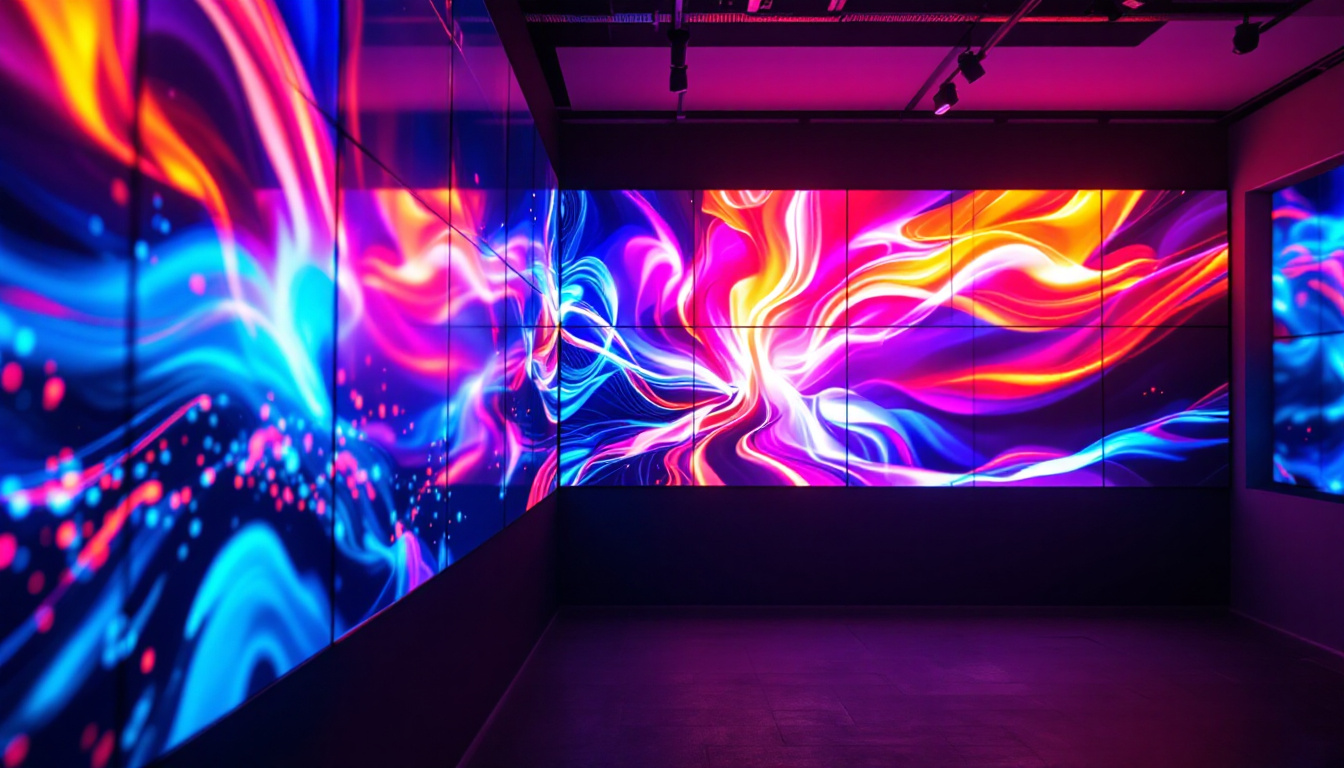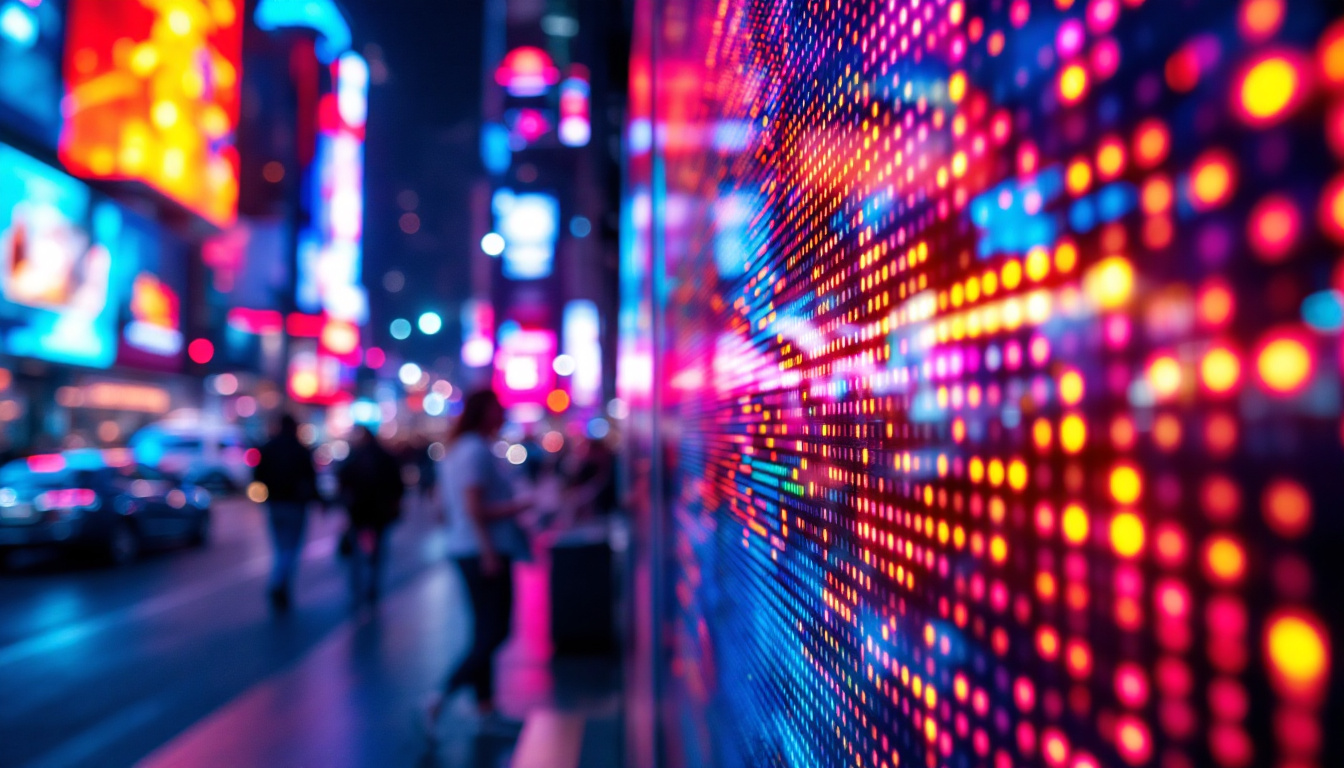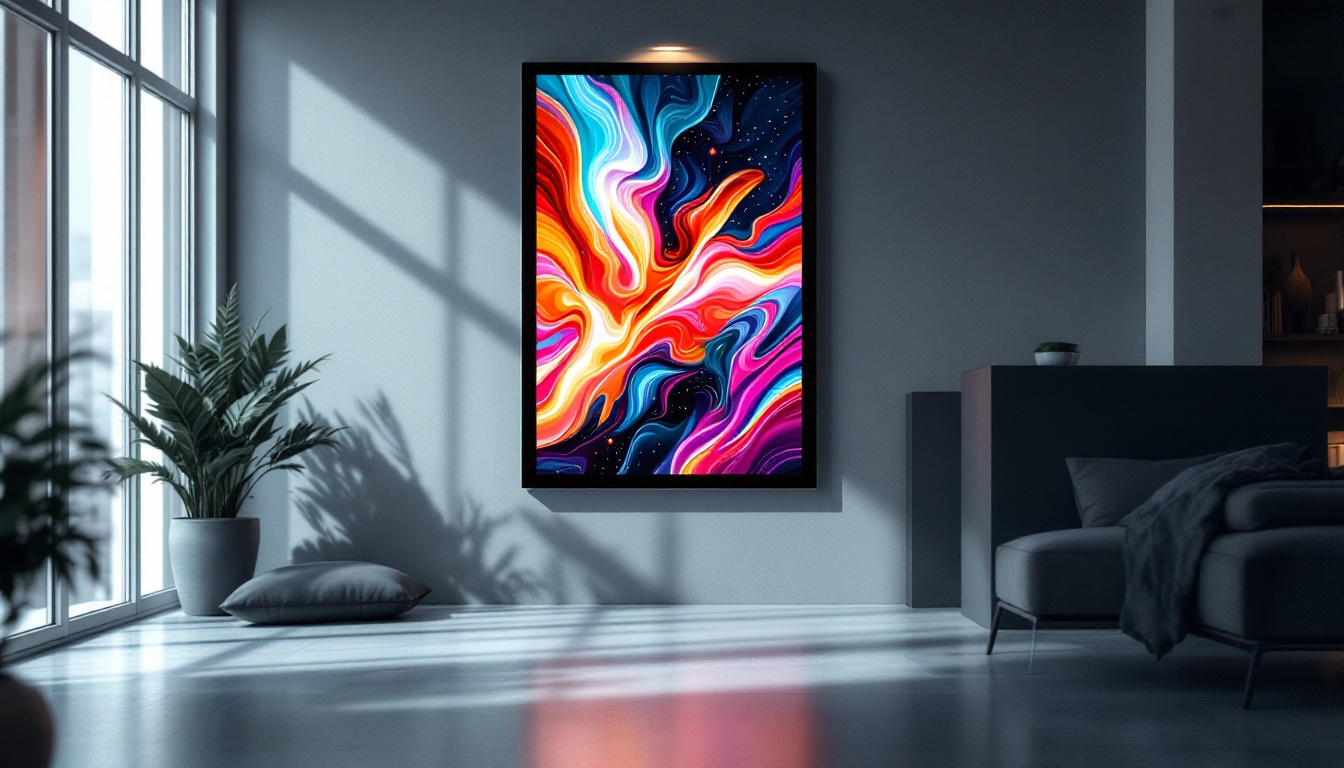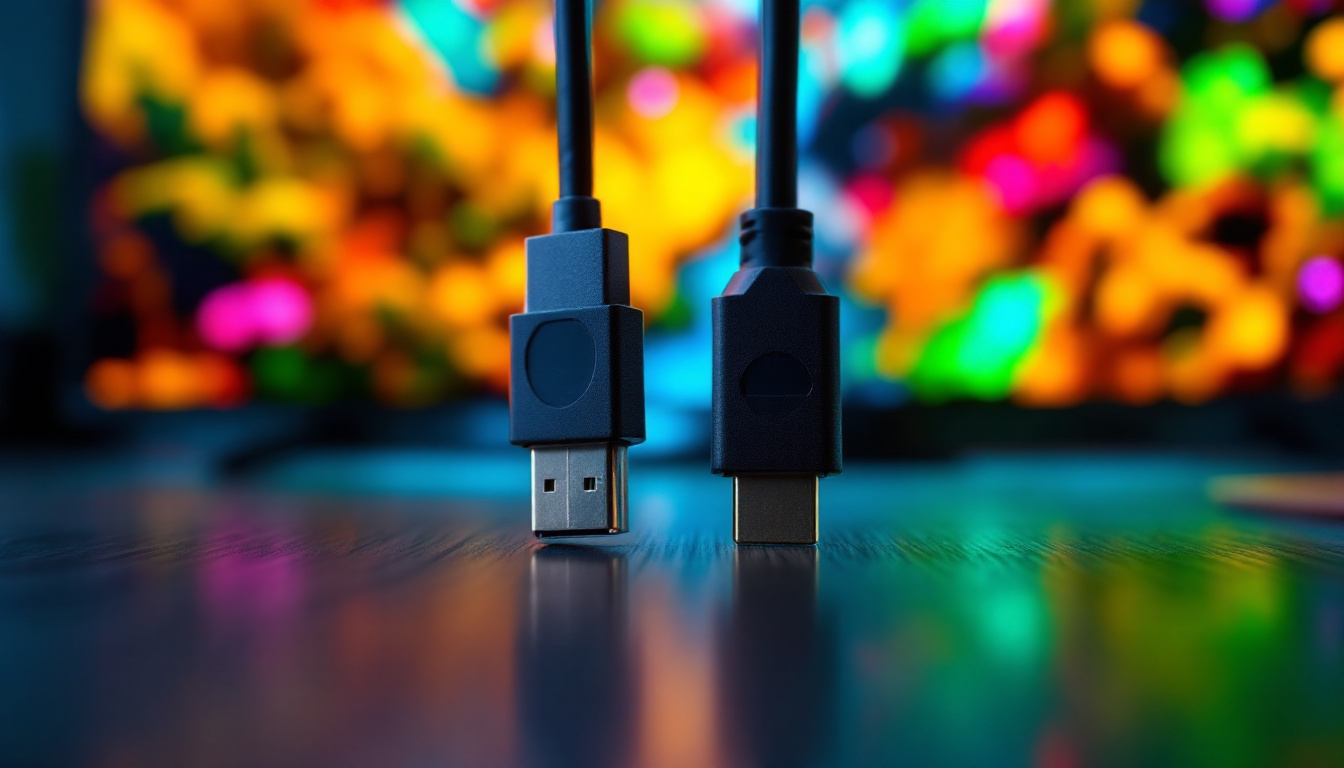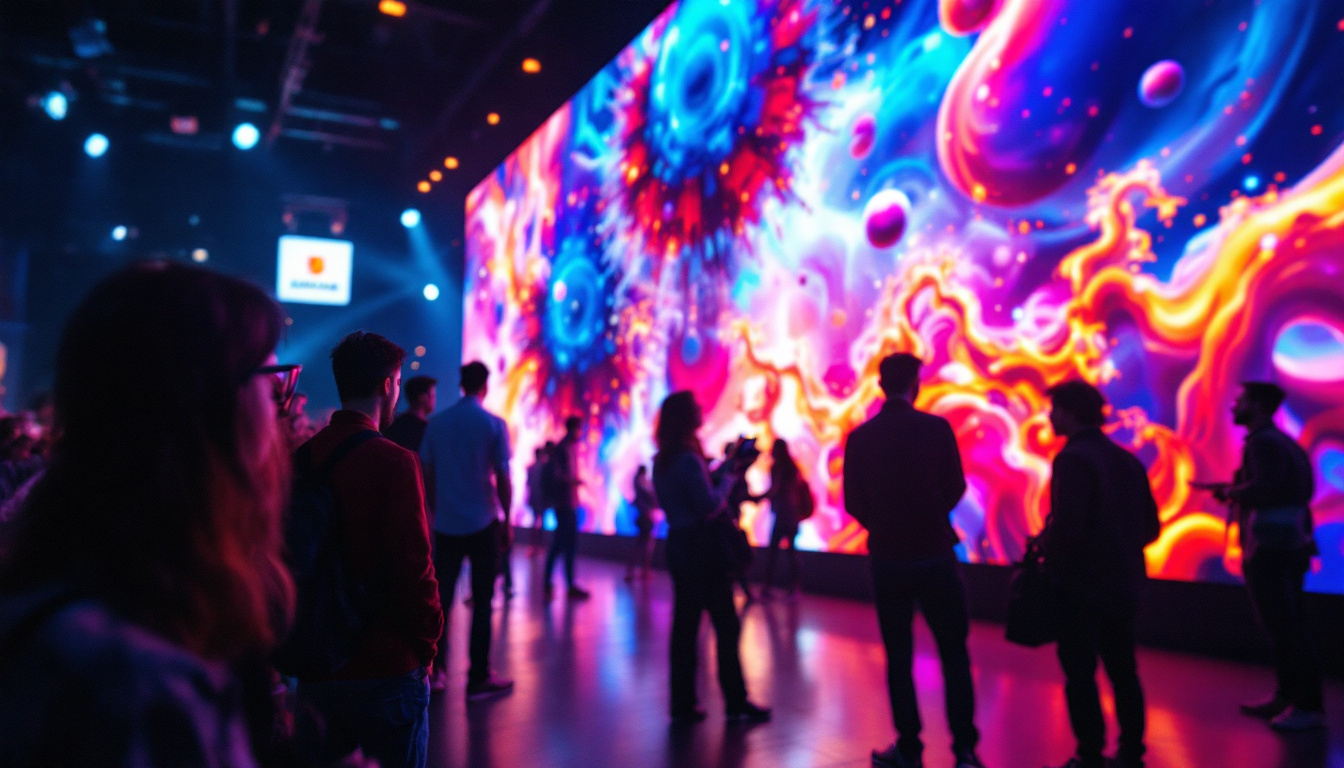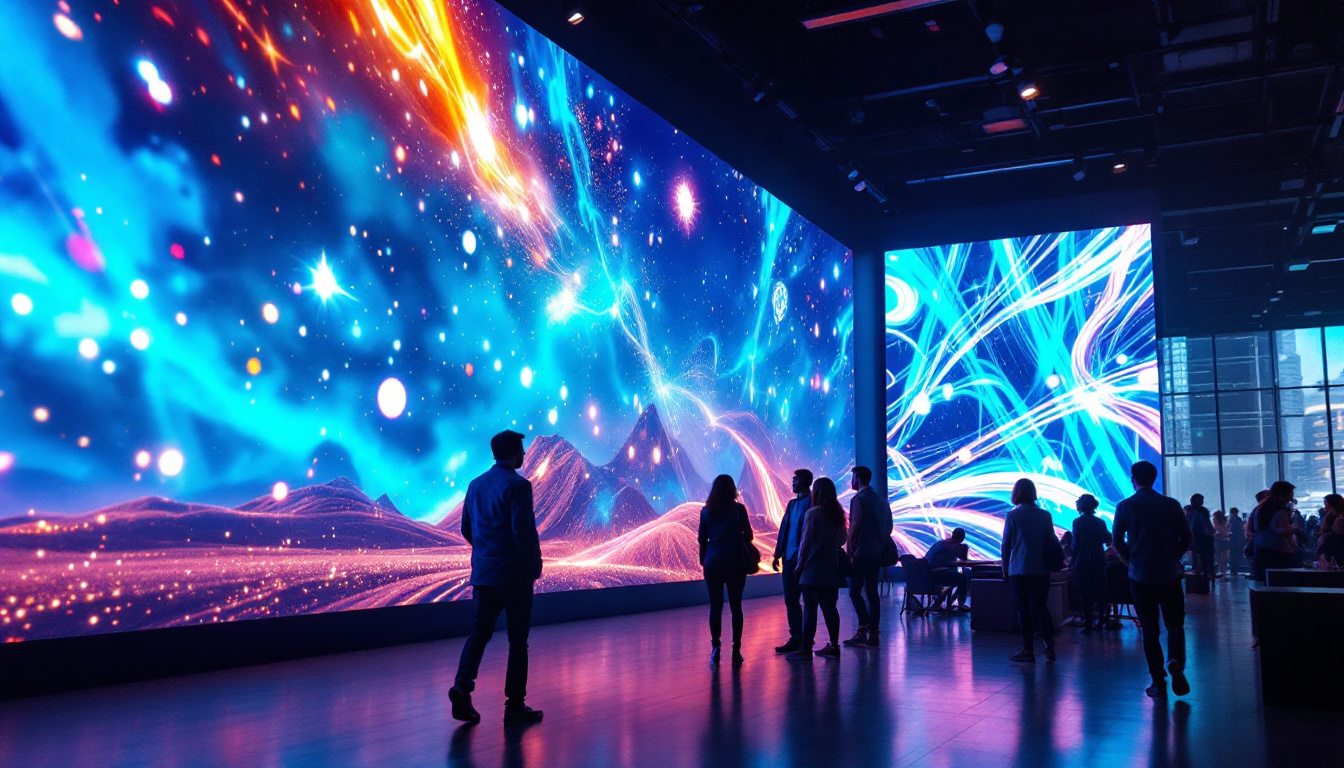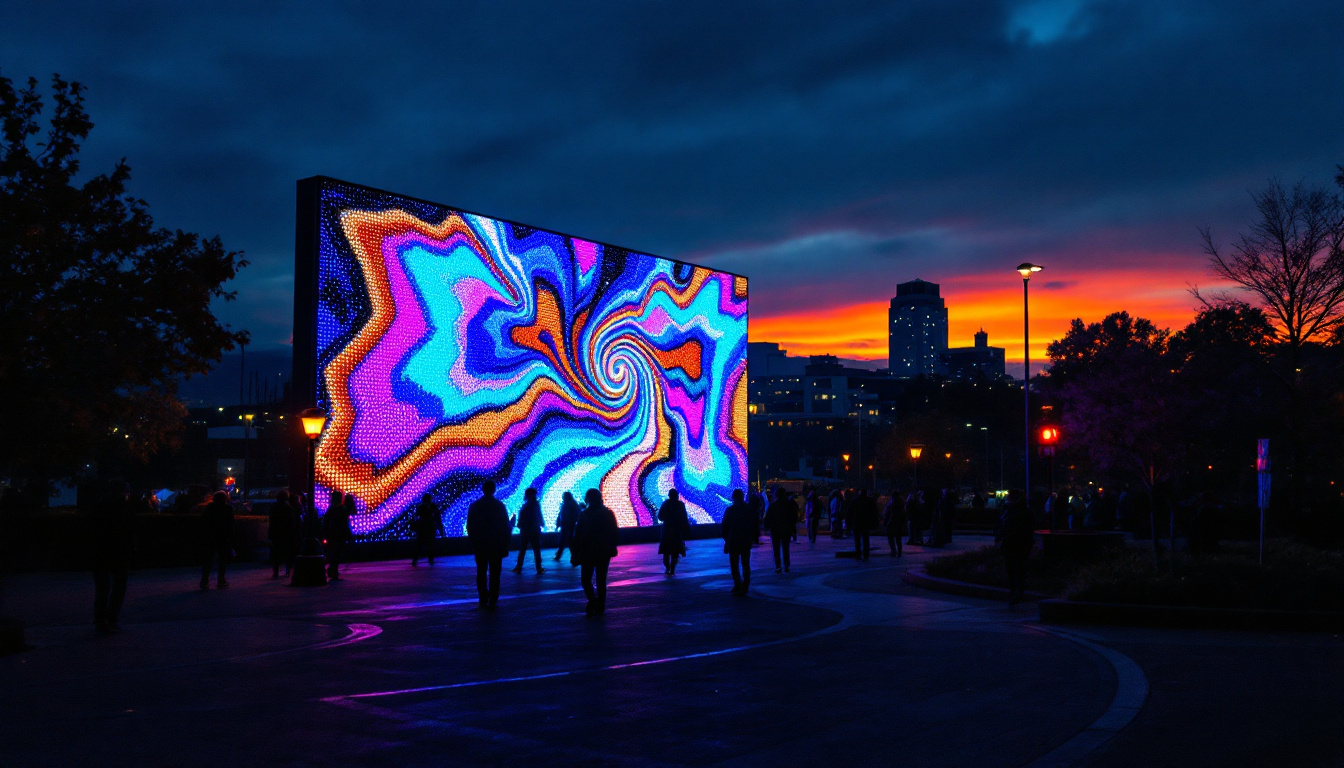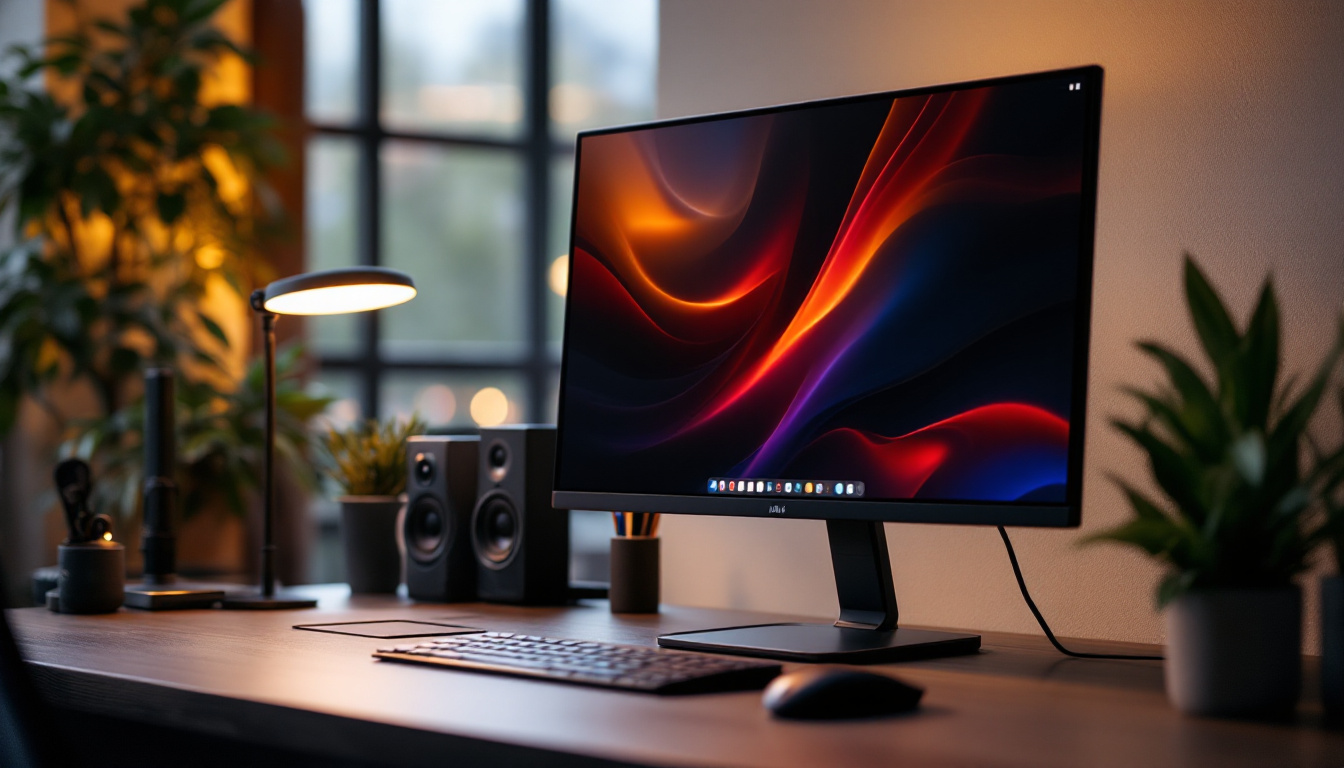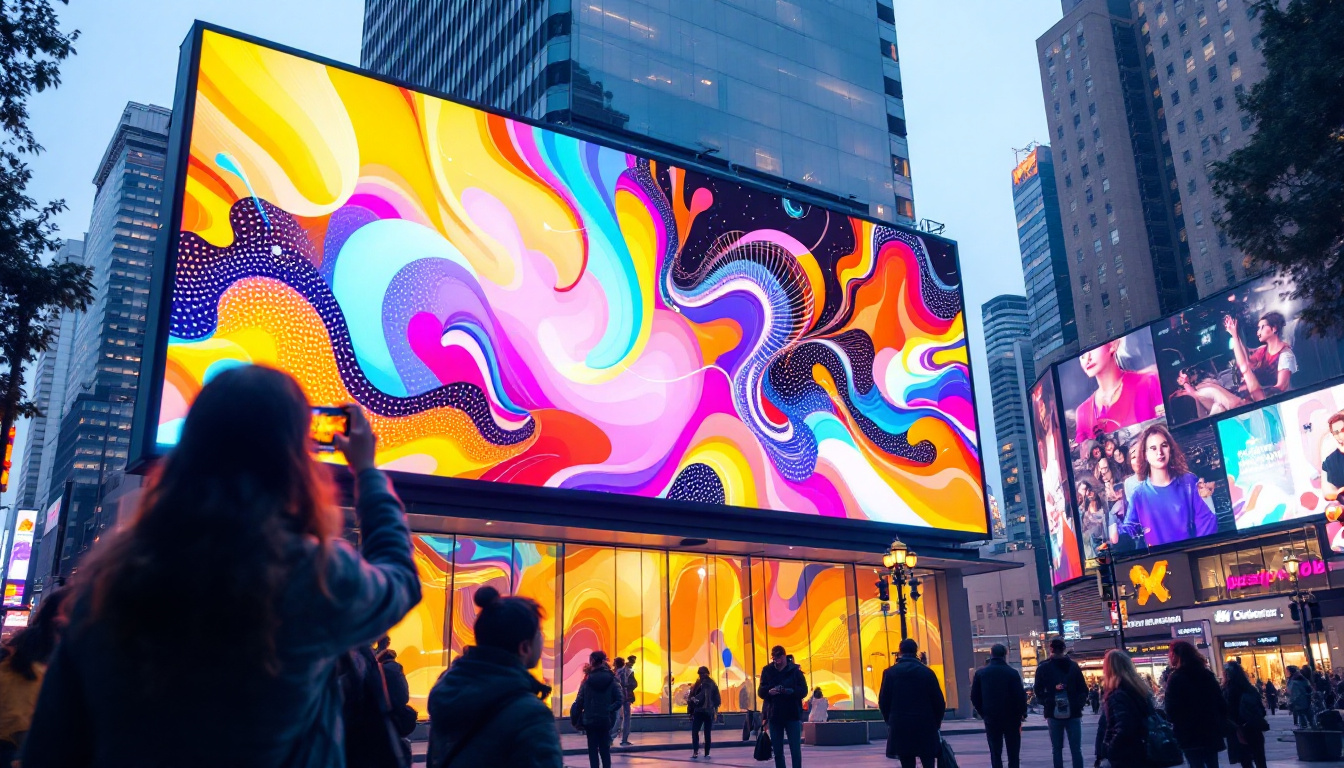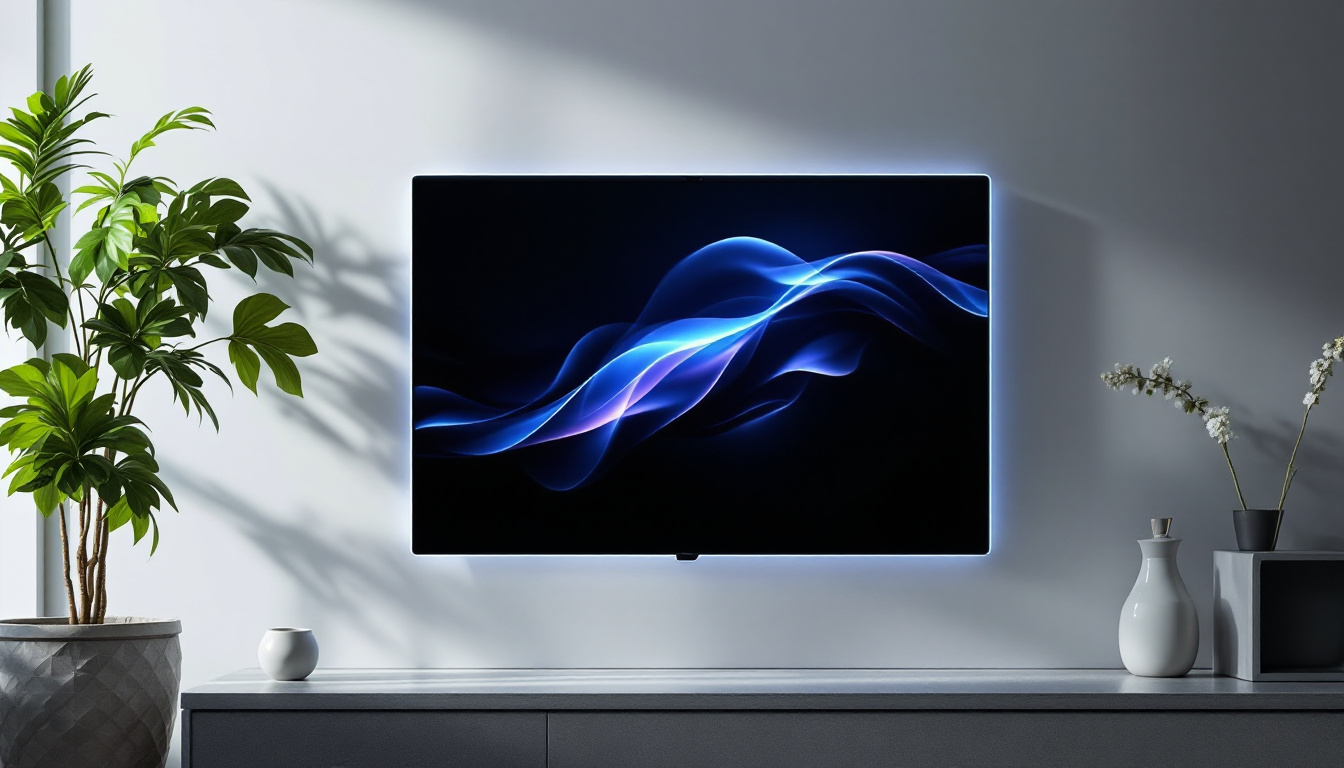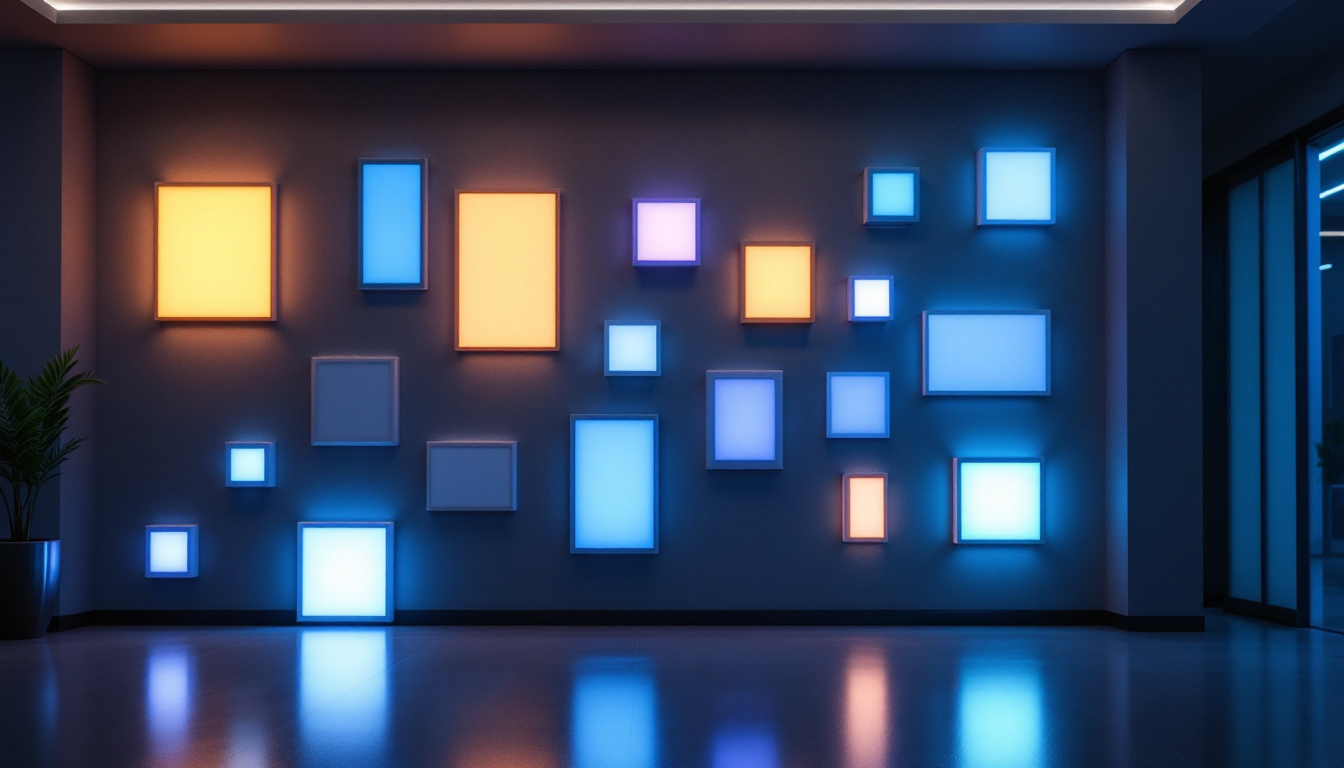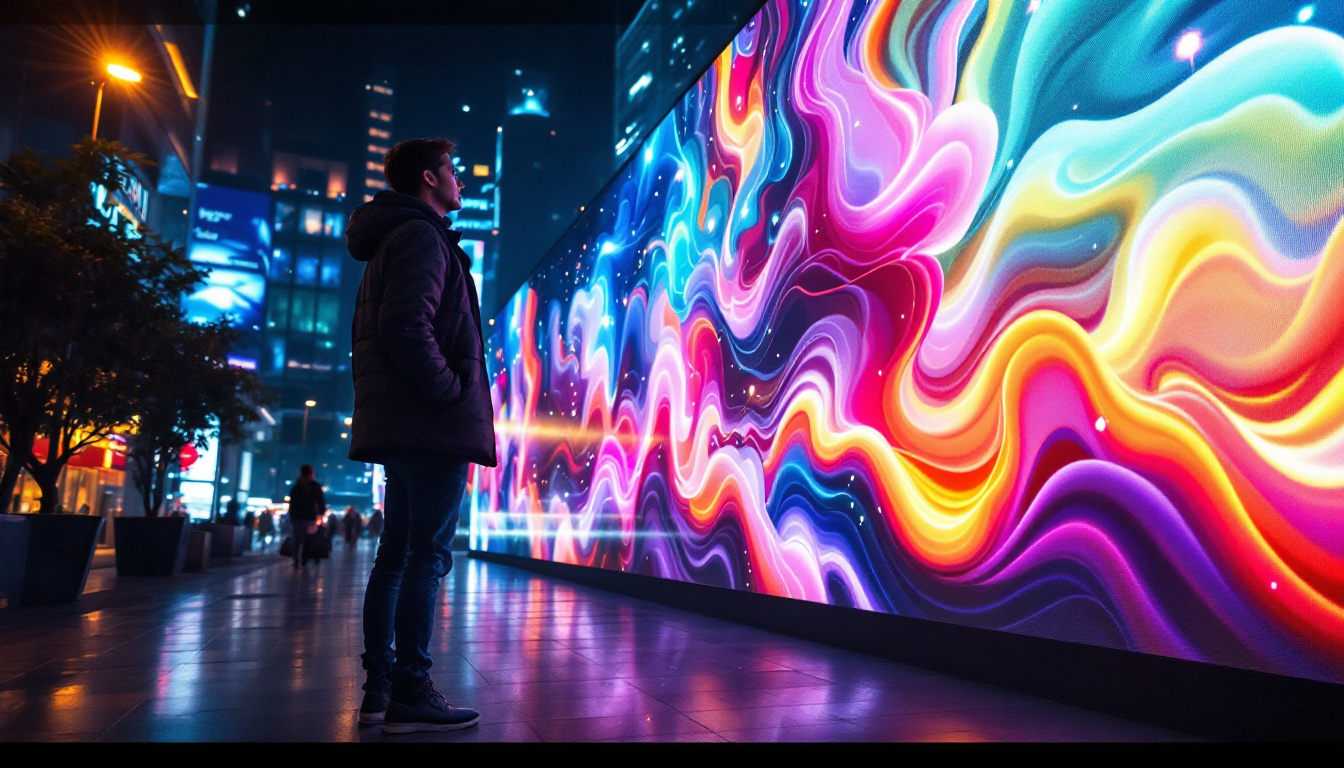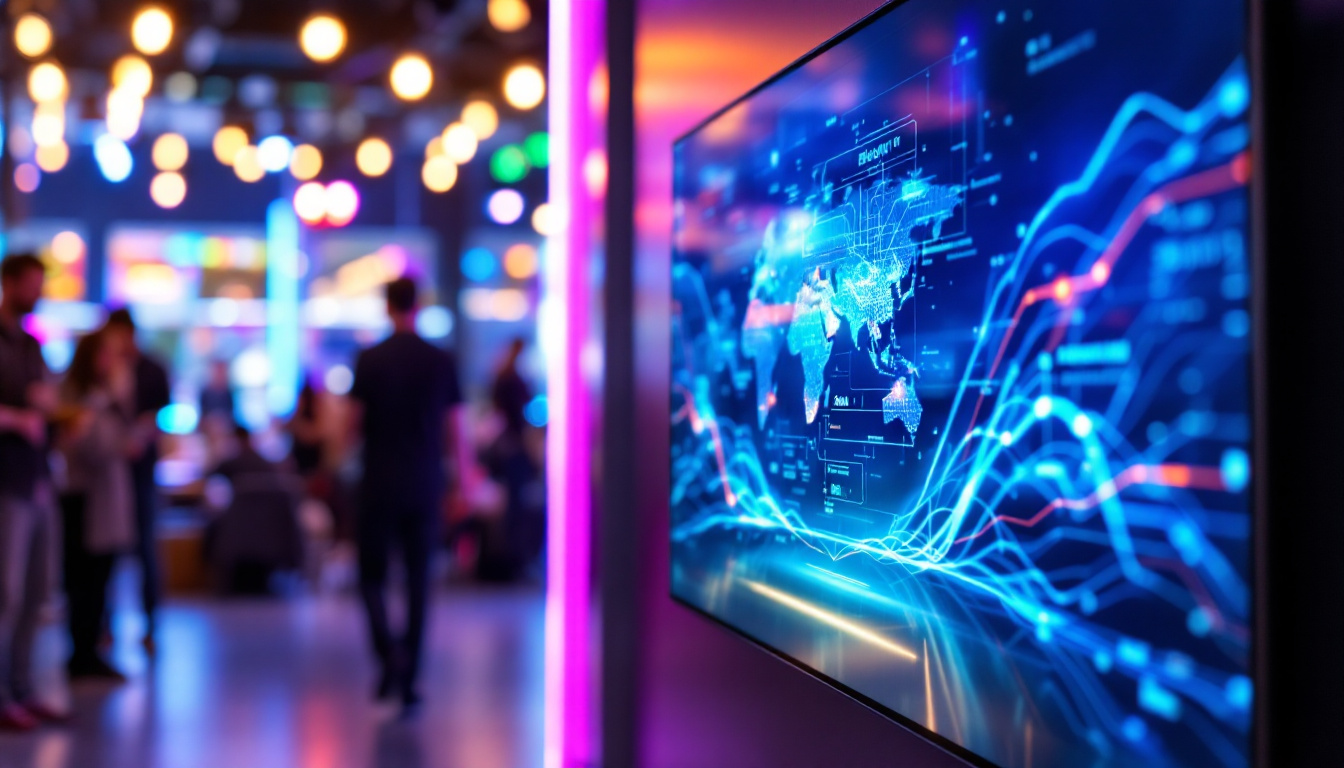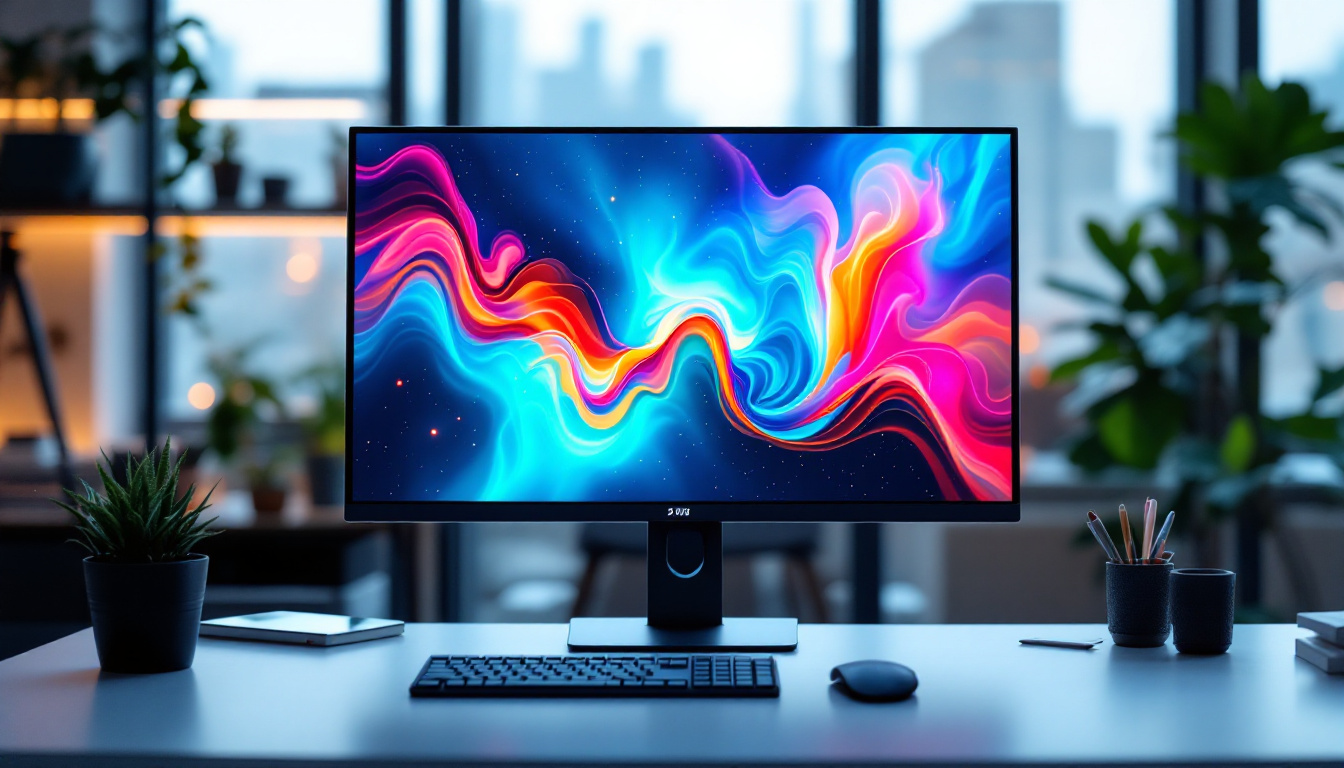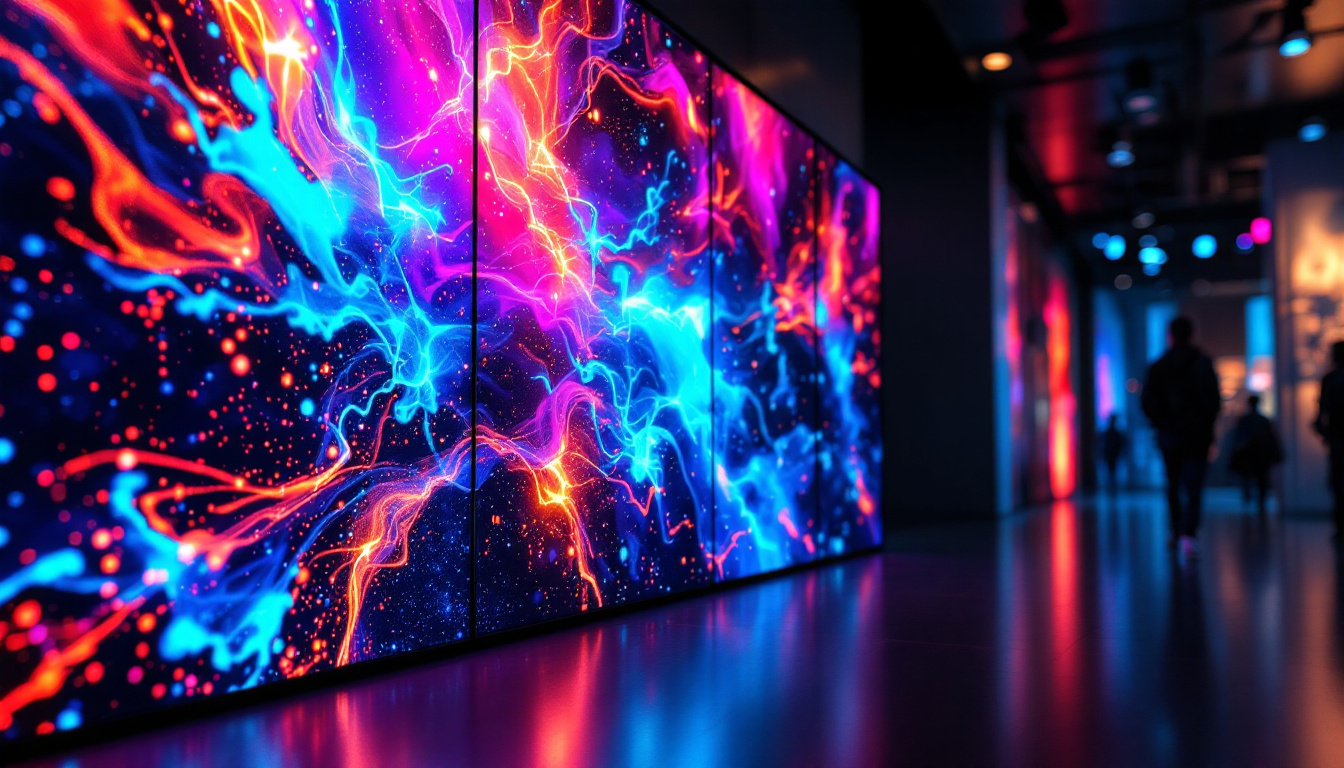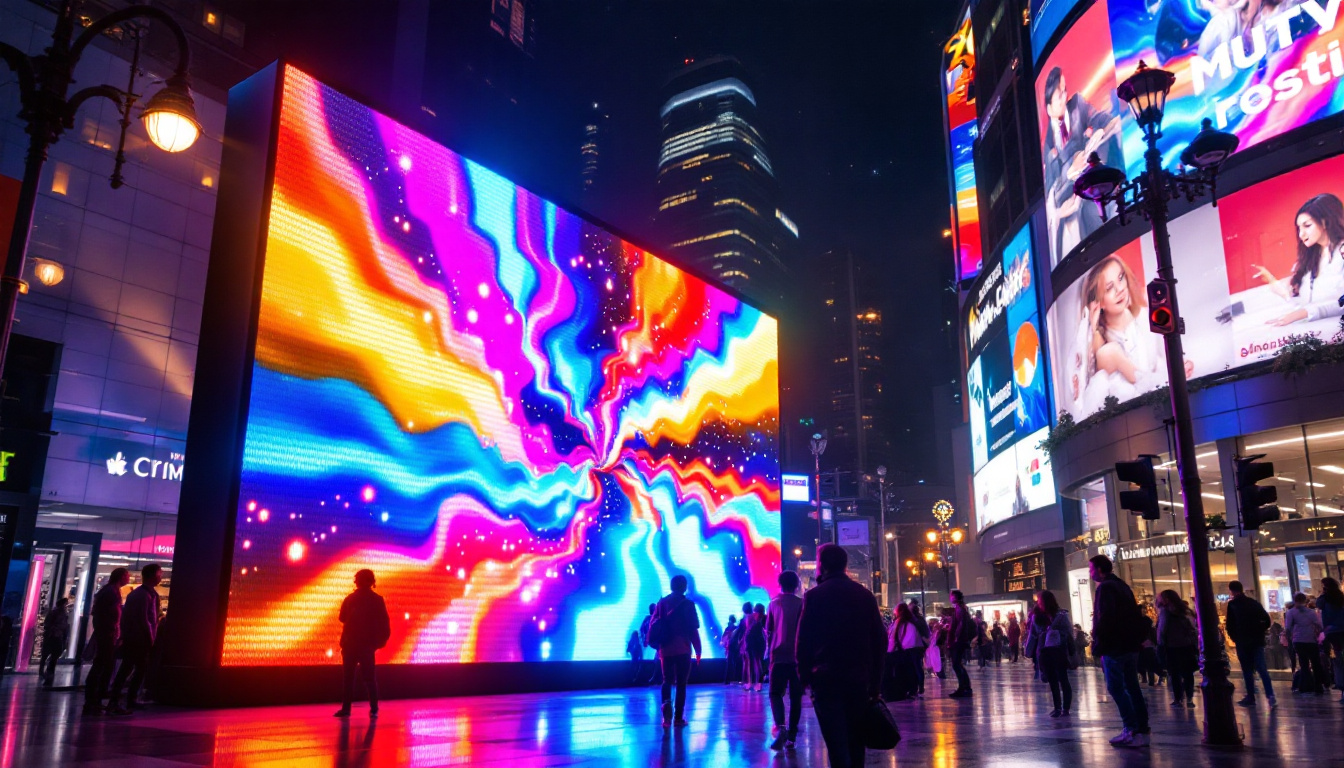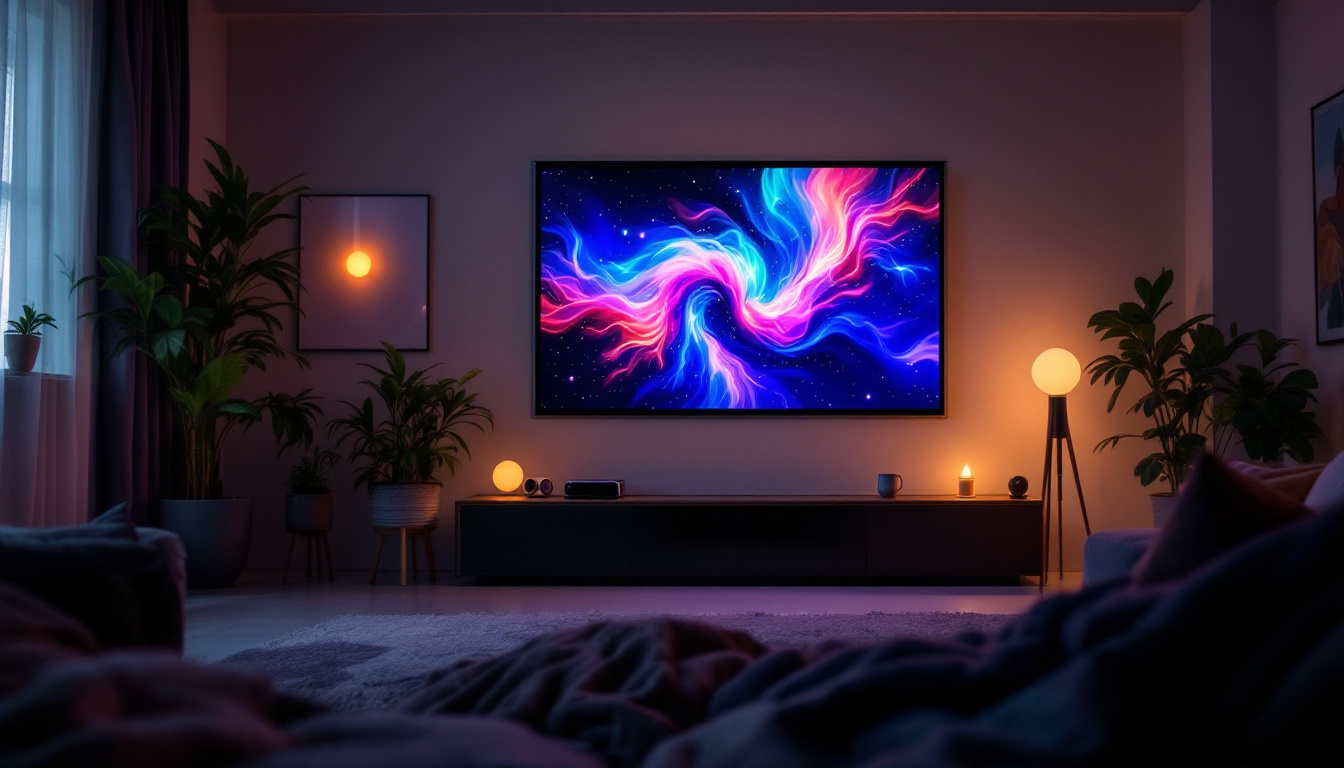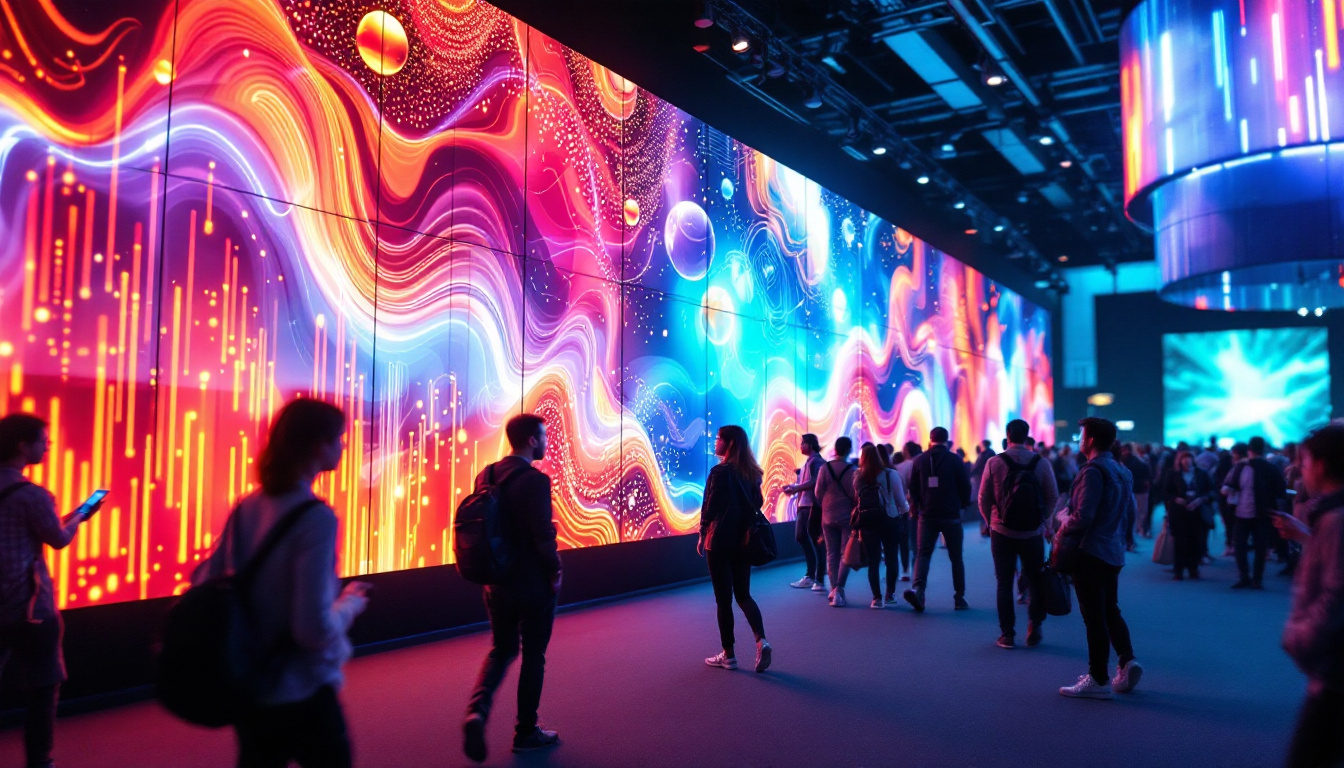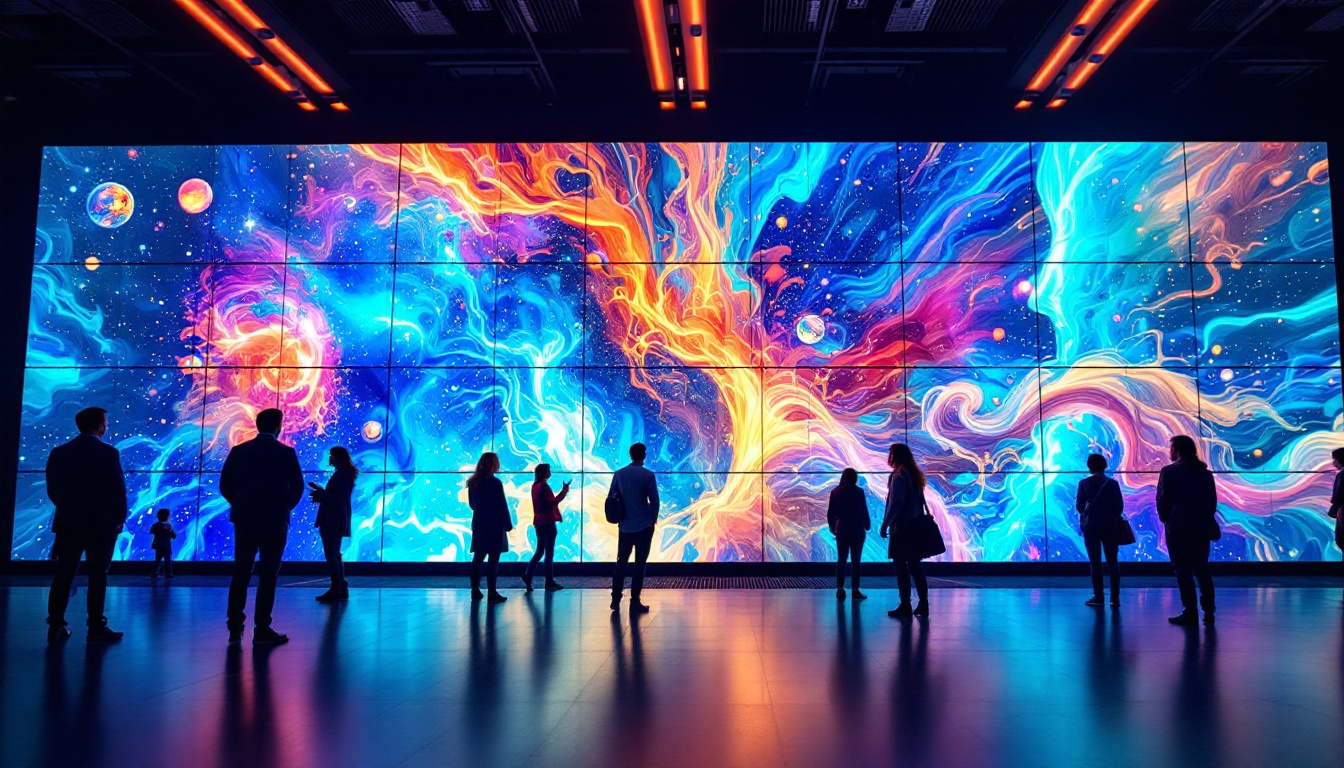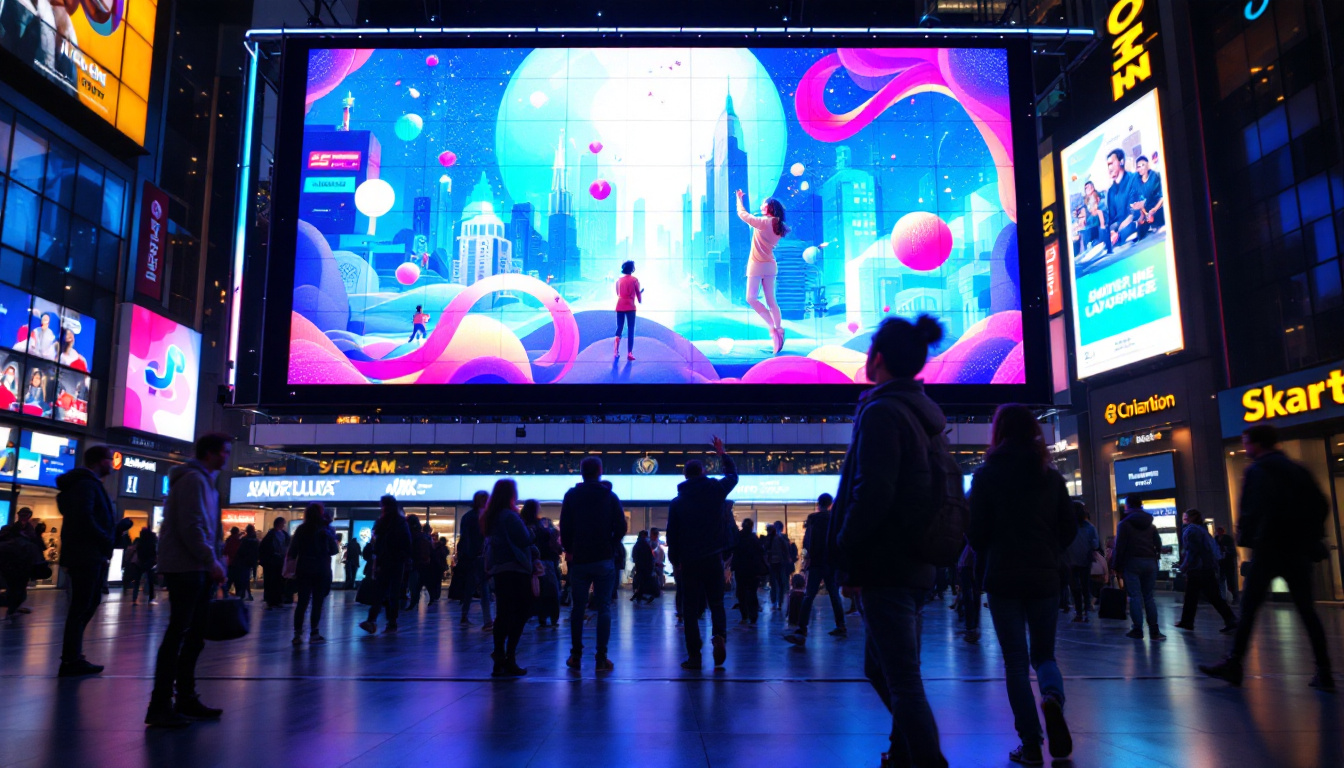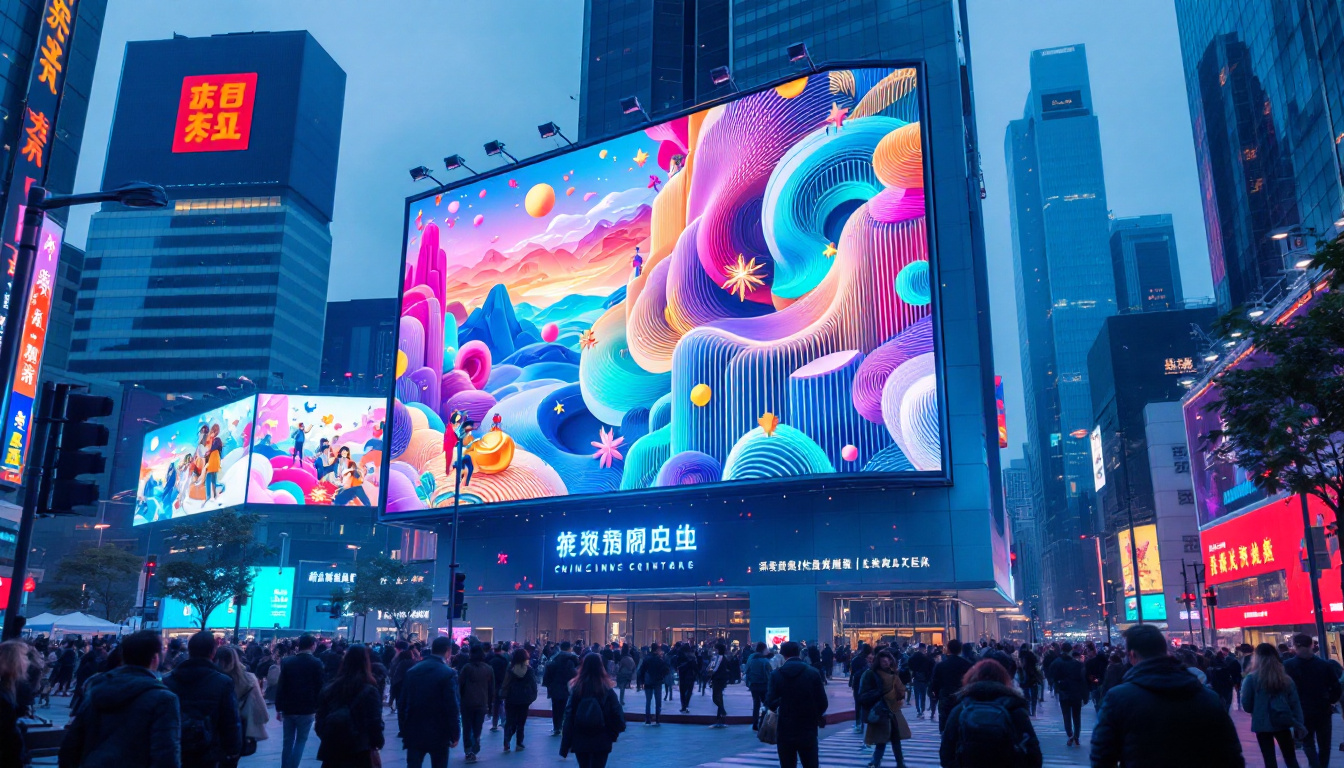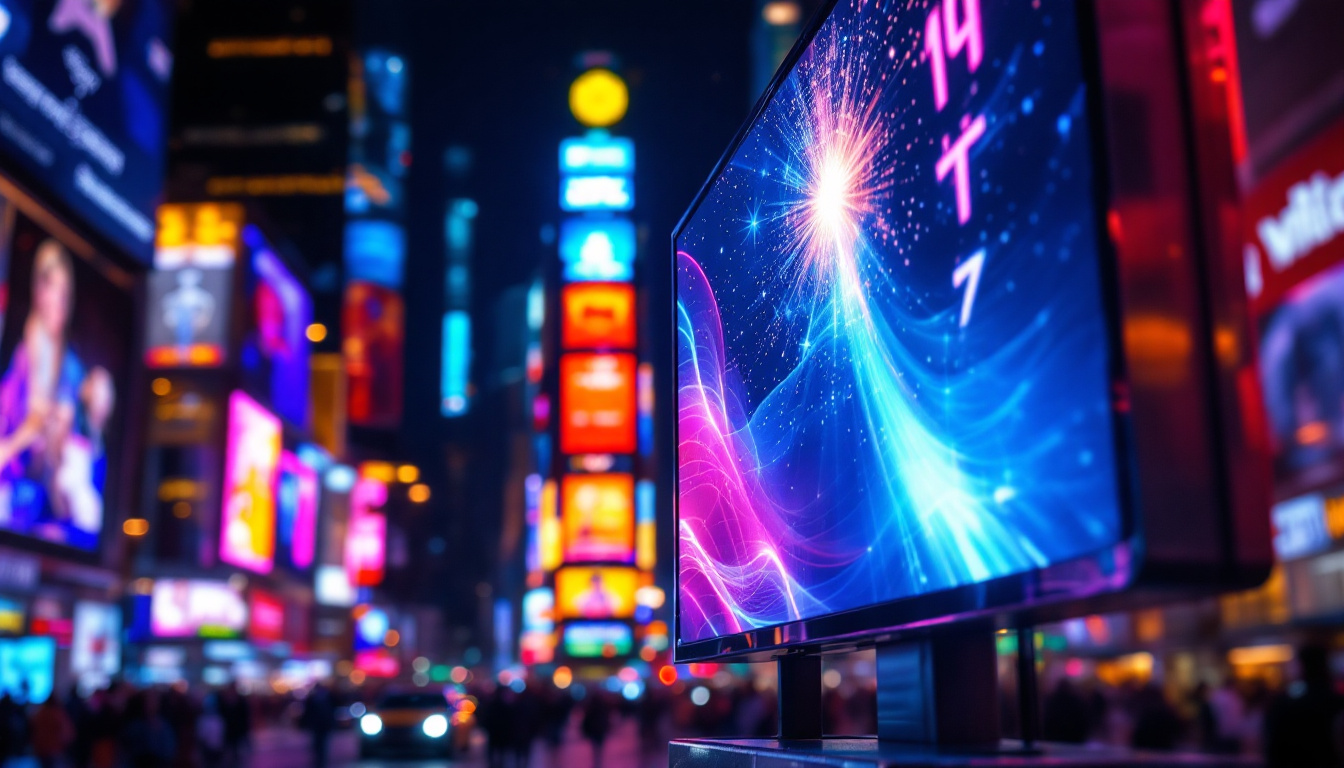In the modern digital landscape, the choice of display technology can significantly impact productivity, user experience, and overall satisfaction. Among the various types of displays available, LED (Light Emitting Diode) displays have gained immense popularity for desktop use. This article delves into the intricacies of LED displays, exploring their technology, advantages, and considerations for users looking to upgrade their desktop experience.
Understanding LED Display Technology
LED displays are a type of flat panel display that utilizes light-emitting diodes to produce images. Unlike traditional LCD (Liquid Crystal Display) screens that rely on backlighting, LED displays can either be fully lit by LEDs or use them as a backlight for LCD panels. This fundamental difference leads to several advantages in terms of brightness, color accuracy, and energy efficiency. The increasing popularity of LED technology has revolutionized the way we experience visual media, from the vibrant screens of smartphones to the colossal billboards that light up cityscapes.
How LED Displays Work
The core principle behind LED displays is relatively straightforward. LEDs emit light when an electric current passes through them. In an LED display, thousands of these tiny diodes are arranged in a grid, allowing for the creation of vibrant images. Each pixel on the screen is made up of red, green, and blue subpixels, which combine to produce the full spectrum of colors. This pixel arrangement not only enhances the visual experience but also allows for rapid refresh rates, making LED displays ideal for fast-moving content such as sports and action movies.
There are two main types of LED displays: Direct LED and Edge-Lit LED. Direct LED displays have LEDs placed directly behind the screen, providing uniform brightness and better contrast ratios. In contrast, Edge-Lit displays have LEDs positioned around the edges of the screen, which can lead to uneven lighting in some cases. The choice between these two types often depends on the intended use; for example, Direct LED displays are favored in environments where color accuracy is paramount, such as graphic design studios and medical imaging.
Types of LED Displays
LED displays come in various forms, catering to different needs and preferences. The most common types include:
- Standard LED: These displays are primarily used in consumer electronics and are known for their vibrant colors and energy efficiency.
- OLED (Organic LED): OLED displays offer superior color accuracy and deeper blacks since each pixel emits its own light. This technology is often found in high-end monitors and televisions.
- Mini-LED: A newer technology that uses smaller LEDs for backlighting, allowing for more precise control over brightness and contrast.
In addition to these types, there are also specialized LED displays designed for specific applications. For instance, Transparent LED displays are becoming increasingly popular in retail environments, allowing for eye-catching advertisements while maintaining visibility through the glass. Furthermore, Flexible LED displays are making waves in the design world, enabling curved or bendable screens that can fit into unconventional spaces. These innovations not only enhance aesthetic appeal but also open up new possibilities for creative advertising and immersive experiences.
Moreover, advancements in LED technology continue to evolve, with developments such as MicroLED on the horizon. MicroLED displays utilize microscopic LEDs that can be individually controlled, promising even greater efficiency and performance than current technologies. This could lead to displays with unparalleled resolution and color fidelity, making them ideal for applications ranging from virtual reality to high-end home theaters. As the demand for high-quality visual experiences grows, the future of LED display technology looks brighter than ever.
Advantages of LED Displays
LED displays have become a preferred choice for many desktop users due to several compelling advantages. Understanding these benefits can help users make informed decisions when selecting a display for their workspace.
Enhanced Brightness and Color Accuracy
One of the standout features of LED displays is their ability to produce bright and vivid colors. The use of LEDs allows for higher brightness levels compared to traditional LCDs, making them suitable for various lighting conditions. Whether in a well-lit office or a dimly lit room, LED displays can maintain clarity and vibrancy.
Moreover, LED displays often exhibit superior color accuracy, which is crucial for tasks that require precise color representation, such as graphic design and photo editing. This capability is particularly pronounced in OLED displays, where each pixel can be turned on or off independently, resulting in stunning visuals.
Energy Efficiency
Energy consumption is a significant consideration for both environmental and economic reasons. LED displays are known for their energy efficiency, consuming less power than traditional display technologies. This efficiency not only reduces electricity bills but also contributes to a lower carbon footprint, making LED displays an eco-friendly choice.
In addition, many LED displays incorporate features such as automatic brightness adjustment, further optimizing energy usage based on ambient light conditions.
Longer Lifespan
Another advantage of LED technology is its longevity. LED displays typically have a lifespan of 30,000 to 50,000 hours, far exceeding that of traditional LCDs. This durability translates to less frequent replacements and lower long-term costs, making them a wise investment for both home and office environments.
Considerations When Choosing an LED Display
While LED displays offer numerous benefits, there are several factors to consider to ensure the best choice for individual needs. Understanding these considerations can help users avoid common pitfalls and select a display that aligns with their requirements.
Screen Size and Resolution
Screen size and resolution are critical factors that impact the overall user experience. A larger screen can enhance productivity by providing more screen real estate, allowing users to multitask effectively. However, it is essential to balance size with resolution. A high-resolution display (such as 4K) is preferable for larger screens, as it ensures sharp images and text without pixelation.
For most desktop users, a screen size between 24 and 32 inches is ideal, depending on desk space and viewing distance. Additionally, higher resolutions are particularly beneficial for creative professionals who require precise detail in their work.
Refresh Rate and Response Time
For gamers and those who engage in fast-paced activities, refresh rate and response time are crucial specifications. The refresh rate, measured in hertz (Hz), indicates how many times per second the display refreshes the image. A higher refresh rate (such as 144Hz or 240Hz) results in smoother motion and reduced motion blur, enhancing the gaming experience.
Response time, measured in milliseconds (ms), refers to how quickly a pixel can change from one color to another. Lower response times are preferable for gaming and video playback, as they minimize ghosting and blurring effects.
Applications of LED Displays
LED displays are versatile and find applications in various fields beyond personal computing. Their adaptability makes them suitable for a wide range of environments and uses.
Professional Use
In professional settings, LED displays are commonly used in design studios, video editing suites, and corporate offices. Their color accuracy and brightness make them ideal for tasks that require precise visual representation. Additionally, many professionals appreciate the ergonomic benefits of larger screens, which can reduce eye strain during extended use.
Gaming and Entertainment
The gaming industry has embraced LED technology, with many gaming monitors featuring high refresh rates and low response times. Gamers benefit from the immersive experience provided by vibrant colors and fast motion, making LED displays a popular choice for gaming setups.
Moreover, LED displays are also widely used in home theaters, where high resolution and color depth enhance the viewing experience for movies and television shows.
Commercial Displays
In retail and advertising, LED displays serve as powerful marketing tools. digital signage powered by LED technology can capture attention with bright visuals and dynamic content. These displays are often used in storefronts, airports, and public spaces to convey information and promote products effectively.
Maintenance and Care for LED Displays
To ensure the longevity and optimal performance of LED displays, proper maintenance and care are essential. Users can take several steps to protect their investment and maintain display quality over time.
Cleaning and Dust Management
Regular cleaning is crucial for maintaining the clarity and brightness of LED displays. Dust and fingerprints can accumulate on the screen, affecting image quality. Users should use a soft, lint-free cloth and a gentle cleaning solution specifically designed for screens to avoid damage. It is advisable to turn off the display before cleaning to prevent any potential damage from static electricity.
Additionally, keeping the surrounding environment clean can help minimize dust accumulation on the display. Regularly dusting the workspace and ensuring proper ventilation can contribute to the longevity of the display.
Calibration and Settings
To achieve the best visual performance, users should consider calibrating their LED displays. Many monitors come with built-in calibration tools, allowing users to adjust brightness, contrast, and color settings to suit their preferences. Calibration can enhance color accuracy and ensure that the display meets the specific needs of various tasks.
Furthermore, users should explore the display settings to optimize performance based on their usage. For example, gaming monitors may have specific settings that enhance responsiveness and reduce input lag, while professional monitors may prioritize color accuracy.
Future Trends in LED Display Technology
The landscape of LED display technology is continually evolving, with innovations that promise to enhance user experience further. Staying informed about these trends can help users make educated decisions when considering future upgrades.
Advancements in Mini-LED and Micro-LED
Mini-LED and Micro-LED technologies represent the next frontier in display technology. Mini-LED displays utilize smaller LEDs for backlighting, allowing for improved contrast and brightness control. This technology enhances HDR (High Dynamic Range) performance, resulting in more lifelike images.
Micro-LED, on the other hand, takes the concept further by using microscopic LEDs to create individual pixels. This technology offers unparalleled color accuracy, brightness, and energy efficiency, making it a game-changer for both consumer and professional displays.
Integration with Smart Technology
As smart technology continues to permeate everyday life, LED displays are also evolving to integrate with smart features. Future displays may include built-in AI capabilities, allowing for personalized settings and enhanced user interaction. This integration can lead to more intuitive experiences, making it easier for users to adapt their displays to their preferences.
Conclusion
LED displays have revolutionized the way users interact with their desktops, offering a blend of vibrant visuals, energy efficiency, and longevity. Understanding the technology behind LED displays, their advantages, and considerations for selection can empower users to make informed choices for their computing needs.
As technology continues to advance, the future of LED displays looks promising, with innovations that will enhance user experiences even further. Whether for professional use, gaming, or entertainment, LED displays are poised to remain a cornerstone of modern desktop setups.
Explore Cutting-Edge LED Displays with LumenMatrix
Ready to elevate your visual experience with the latest in LED display technology? Look no further than LumenMatrix, a pioneer in crafting innovative LED display modules designed to maximize brand visibility and captivate audiences. From the immersive Indoor LED Wall Display to the dynamic Outdoor LED Wall Display, and from the versatile Vehicle LED Display to the sleek LED Poster Display, LumenMatrix offers a comprehensive suite of solutions tailored to your needs. Discover the transformative power of LED Sports Displays, Floor LED Displays, Custom LED Displays, All-in-One LED Displays, and LED Transparent Displays. Join the visual revolution and check out LumenMatrix LED Display Solutions today to create unforgettable visual experiences and communicate your message with unparalleled impact.

